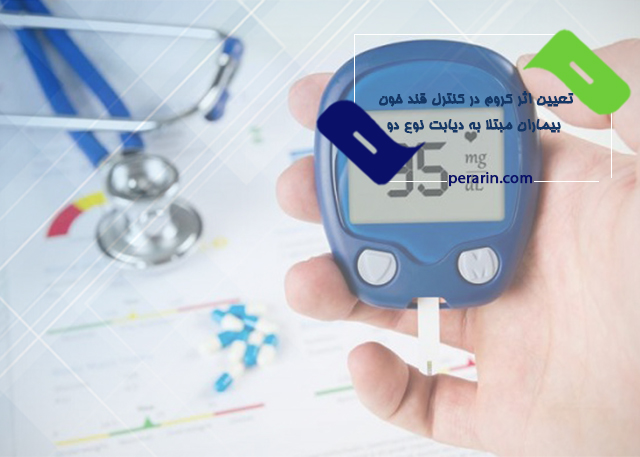
Determining the Effect of Chromium on Blood Sugar Control in Patients with Type 2 Diabetes
Determining the Effect of Chromium on Blood Sugar Control in Patients with Type 2 Diabetes
The Effect of Chromium on Blood Sugar Control in Patients
Chromium is an essential mineral that appears to be necessary for the normal homeostasis of glucose and lipids. Trivalent chromium is found in a complex called the Glucose Tolerance Factor (GTF), which is considered biologically active. Chromium was first discovered in brewer’s yeast.
Types of Chromium
Chromium chloride, chromium nicotinate, and chromium picolinate are trivalent chromium compounds commonly used, with chromium picolinate having the highest absorption rate. Severe chromium deficiency can lead to insulin resistance and diabetes. Under normal conditions, chromium binds to a low-molecular-weight oligopeptide, increasing the number of insulin receptors and their phosphorylation. As a result, insulin receptor enzyme activity increases, regulating blood glucose and glycated hemoglobin (HbA1C).
Chromium Behavior Outside the Body
Studies conducted outside the body have shown that chromium supplements, particularly chromium bound to niacin, can reduce insulin resistance and lower cholesterol levels. Additionally, evidence suggests that chromium picolinate administration outside the body enhances insulin sensitivity by intensifying insulin receptor stimulation.
Research
Several studies, including those conducted in Iran, have demonstrated that chromium concentration in the serum and hair of diabetic patients and individuals with glucose intolerance is significantly lower than in the control group. However, the findings on chromium supplementation in both healthy individuals and diabetes patients have been inconsistent. Several studies indicate that chromium intake, combined with increased physical activity, can enhance muscle mass, promote fat metabolism, and improve glucose and lipid metabolism.
This study was conducted as a prospective, double-blind, randomized, placebo-controlled trial. Patients with type 2 diabetes who were undergoing oral drug treatment and had an HbA1C level of 7% or higher were recruited from outpatient diabetes clinics.
Research Methodology
At the beginning of the study, a questionnaire was completed for each patient, including age, gender, and body mass index (BMI). Patients were instructed to continue their current medications, maintain their usual diet and physical activity levels, and refrain from consuming ferrous sulfate, zinc sulfate, other minerals, and vitamins during the study.
The following parameters were measured at baseline:
- Fasting blood glucose (using the glucose oxidase method)
- Glycated hemoglobin (HbA1C) (using the Iron Chromatographic Micro Assay Exchange method)
- Low-density lipoprotein (LDL) (using the Direct Chol-LDL method)
- High-density lipoprotein (HDL) (using the HDL Direct Chol method)
- Triglycerides (using the PAP-GPO/lipase method)
- Blood urea nitrogen (BUN) (using the urease-kinetic method)
- Serum creatinine (using the Joffe method)
- Alanine aminotransferase (ALT) (using the colorimetric method)
- Aspartate aminotransferase (AST) (using the colorimetric method)
- Serum chromium levels (using the Less Flame Absorption Atomic method)
Study Process
Patients were randomly divided into two groups: the treatment group and the control group, with 20 patients in each group. Random sampling was performed systematically. The treatment group received 200 micrograms of chromium picolinate daily, while the control group received a placebo for three months.
At the end of the treatment period, the same parameters (fasting blood glucose, HbA1C, LDL, HDL, triglycerides, BUN, creatinine, and serum chromium levels) were re-measured and recorded.
Research Findings
The results of this study showed that after three months of administering 200 micrograms of chromium picolinate, there was a significant reduction in HbA1C levels compared to the control group. In general, double-blind studies on the effects of chromium in patients with type 2 diabetes are limited. Therefore, findings from other studies may be of lower value due to potential external factors, although most have reported reductions in glucose and HbA1C levels.
In this study, all participants had type 2 diabetes and were undergoing oral antidiabetic treatment, with HbA1C levels above 7%. The results suggest that administering a small amount of highly absorbable chromium in the short term can improve the metabolic status of type 2 diabetic patients. However, it does not have a significant effect on plasma lipid levels or anthropometric indices.
References:
Payami, S., Safarian, S., & Hassanzadeh, A. (2012). Determining the Effect of Chromium on Blood Sugar Control in Patients with Type 2 Diabetes. Iranian Journal of Endocrinology and Metabolism, 14(3 (Serial 63)), 215-221. SID. https://sid.ir/paper/27952/fa
